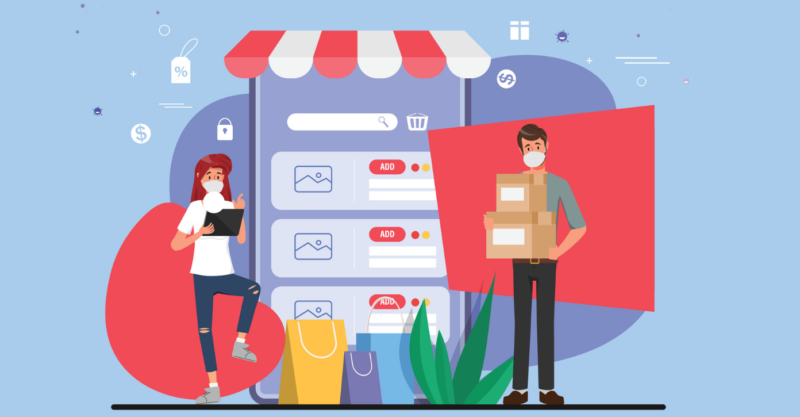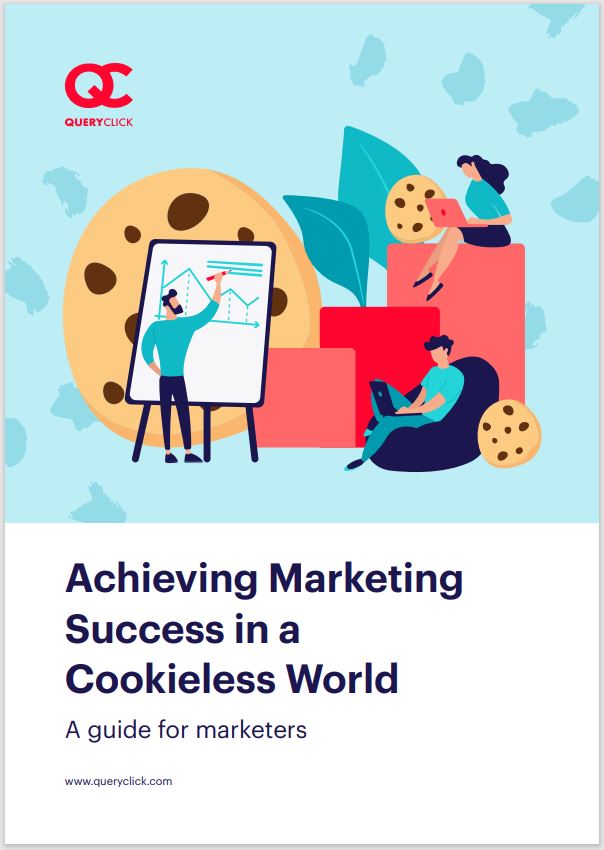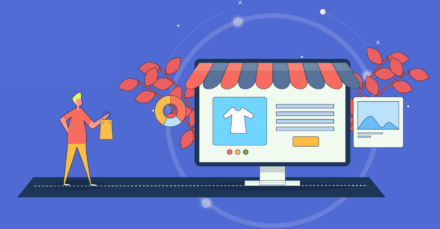How E-commerce Transformed During the Pandemic

The shift that took place in the retail e-commerce market in the last 15 months has been nothing short of seismic.
As customers were forced to change their habits due to lockdowns and the inability to travel – sometimes no further than the end of their own gardens – online retail experienced 10 years growth in just a 3 month period according to research by McKinsey.
So, what else changed in this time period and what are the implications for retailers going forward?
COVID has forced many more retail buys online
The reality is that the very nature of the pandemic changed shopping habits almost overnight.
Whether down to panic buying, the need for health-related essentials – like protective masks – or the increased trend to ordering takeaway for home delivery the shifts have been truly unprecedented.
And figures from emarketer show how e-commerce sales jumped up by 34% or £36bn year on year between 2019 and 2020.
And despite a slight predicted fall in 2021, as offline retail opens up, how sales will continue to grow.
Customers began to purchase new product types online vs. pre-pandemic
And what consumers bought online has changed during the period too.
In fact, according to The Shape of Retail: Consumers and the new normal report 38% of customers said that they had bought a product online that they would not have purchased pre-COVID.
With the following sectors benefiting in particular:
- Health
- Hygiene
- Home essentials
- Food & beverage
For example – the UK online food and grocery retail market has seen huge growth with Tesco doubling its capacity to meet home delivery orders in response to the increase in demand.
There is evidence that many customers will shop online more frequently
Data from the Global Web Index suggests that 49% of UK customers intend to shop online more often in the aftermath of the pandemic.
As they look for some of the key benefits of this type of shopping including:
- Direct to home delivery
- Better value and in particular cheaper prices than offline
- More convenience
- 24/7 access and availability
And there is also evidence that local and altruistic intentions make a difference with research by payments provider Adyen suggesting that 63% of consumers had supported local businesses to help ensure they kept their doors open. A trend that is predicted to continue post-pandemic.
Key retail e-commerce drivers for 2021 and beyond
So, the upside is good.
But what other trends are shaping the market right now and how can retailers position themselves to exploit the opportunity to the full?
Speed and experience are key as the market changes
Customers are not surprisingly looking for a good – and quick – experience.
We think there are 3 key areas that you need to focus on to deliver against this:
- Ensure your site complies with best practices to load fast and perform smoothly for customers. As 53% will abandon a site that takes more than 3 seconds to load.
- Remove friction from the checkout process in order to increase conversions. One-tap checkouts or allowing direct purchase without ‘Add to Basket’ stages.
- Auto-add promotions as users add products to their basket or checkout. This helps to further remove friction caused by adding codes at the conversion point.
And all of this is even more important on mobile devices – with Google switching to mobile first indexing in March 2021, mobile e-commerce accounting for 92% of total e-commerce growth even before COVID-19.
53% of customers will abandon a site that takes more than 3 seconds to load.
Focusing on page speed can transform results for retailers
As those who attended one of our recent masterclass workshops found out – speed has a significant impact on ROI.
Not only is mobile page speed important to meet Google’s recently updated algorithm requirements but page speed is also vital to user experience. With slower-loading pages showing higher bounce rates and lower average time spent on-page.
And the stats here are the really eye-opening aspect of this. As Deloitte pointed out in their research on luxury retail and travel sector websites an improvement of just 0.1s can increase revenue by up to 18%.
But page speed does not only improve organic performance, it also greatly impacts conversion – a fast website and better conversion are tightly linked. And improving the on-site experience is key to getting new customers to spend with your brand.
Is your mobile site up to speed?
Try our free page speed tool
Some additional considerations – retention and loyalty vs full out acquisition
In addition to some of the considerations above retail marketers also have to take account of the fact that:
- Paid media costs have increased – especially via Facebook and Paid Search. Partly due to increased ad spend during COVID and increased competition for digital space
- The advent of IOS 14 and 3rd party cookies – is going to transform the way that retail marketers prospect for new customers. And there will be opportunities and challenges around that
- Leveraging your own 1st party data – will be key in all of this for customer acquisition (via ‘lookalike’ audiences) and to drive retention and loyalty which is going to be pivotal for retail e-commerce brands
So, there is very little doubt that COVID has had an unprecedented impact on the e-commerce retail market from the huge boost in revenues as a direct result of customers being ‘locked’ down for long periods – to shifts in the types of products and services they buy online.
The key to take advantage of this new market potential is to focus on site speed and ensuring a frictionless customer experience that enables you to boost revenues.
And keep your eyes on the prize – research by Statista shows that the market in the US alone will be worth $348bn sales in 2023 – up from $808m in 2014.
Talk to us
Founded in 2008, QueryClick is an independent digital marketing agency focused on data-driven insights and pioneering in-house technology.
With office in Edinburgh, we deliver multi-channel insights and strategic consultancy to a wide range of retail clients including Otty, QUIZ, Tesco and BT. Learn more.
Own your marketing data & simplify your tech stack.
Have you read?
Chrome’s announcement on dropping cookie opt-in last month closed the door on a 5 year saga for marketers. But what is the landscape like in 2025 for cookie-based measurement?
Generative AI is transforming the way that marketers plan and assemble content for their Paid Ads. As big platforms like Google, Meta and TikTok increasingly build the tools needed to...
In a surprising move that has sparked heated debate, Mark Zuckerberg announced on his Instagram that Meta will be reducing its levels of censorship and in particular fact-checking on its...




